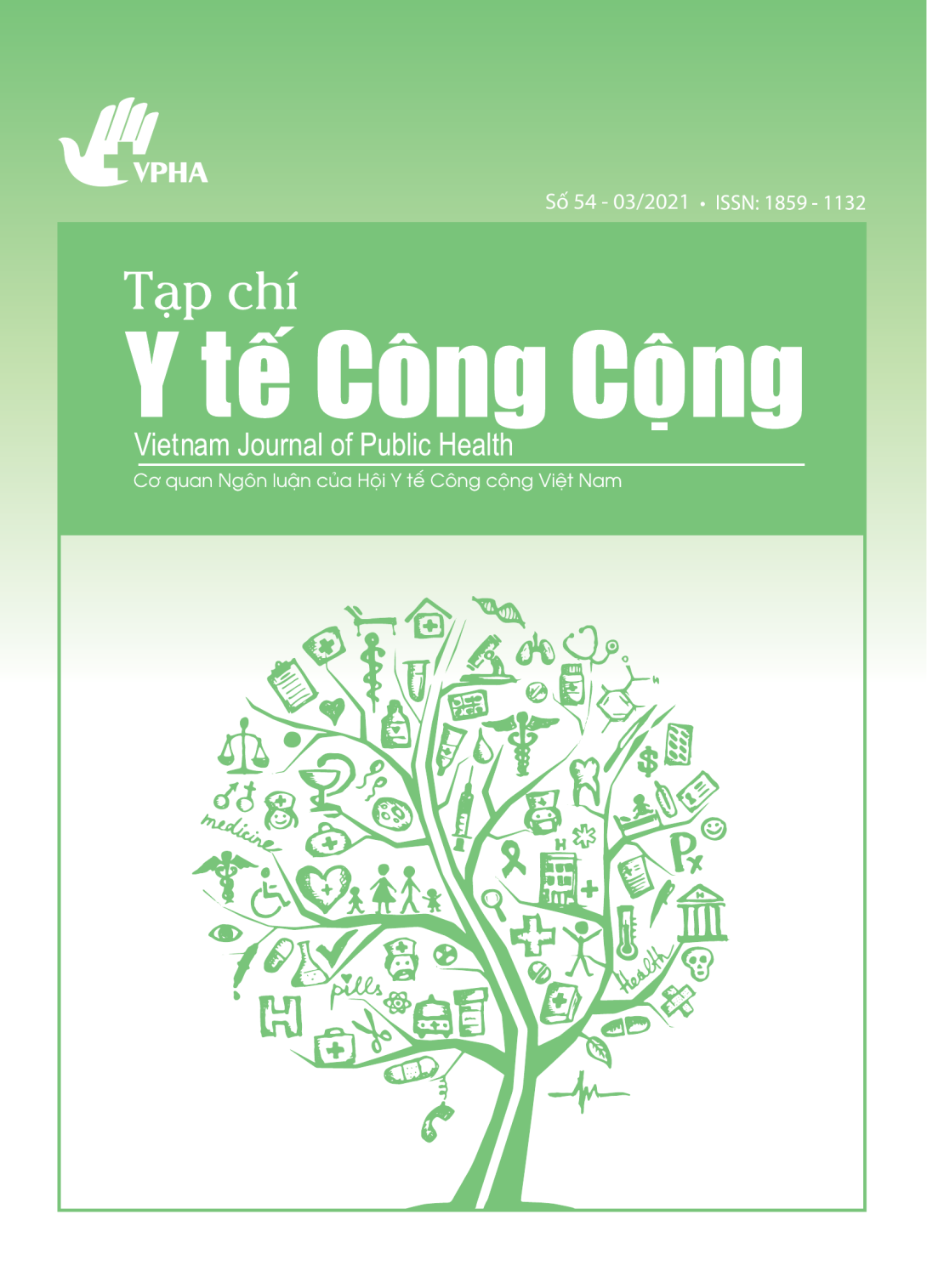
Tình trạng thừa cân, béo phì ở sinh viên đang có xu hướng ngày càng phổ biến và trở thành một trong những thách thức. Nghiên cứu xác định thực trạng béo phì ở sinh viên Đại học Xây dựng và một số yếu tố liên quan. * Phương pháp: Nghiên cứu điều tra cắt ngang trên 515 sinh viên năm thứ 3 trường Đại học Xây Dựng năm học 2018-2019 bằng phiếu điều tra về thực trạng thừa cân béo phí và bộ câu hỏi phát vấn. * Kết quả: Tỷ lệ sinh viên thiếu cân là 16,1%, thừa cân béo phì là 17,9%, trong đó thừa cân 10,9%; béo phì 7,0%. Tỷ lệ thừa cân béo phì ở nam giới 27,1% cao hơn nữ giới 7,7%. Nghiên cứu xác định được một số yếu tố liên quan đến tình trạng thừa cân béo phì ở các đối tượng nghiên cứu gồm giới (OR=4,47, 95%CI: 2,24-8,95); có thói quen sử dụng đồ chế biến sẵn (OR=1,65 (95%CI: 1,01-2,78); trong gia đình có người thừa cân, béo phì (OR=3,63 (95%CI: 1,70-7,76); không thường xuyên chơi thể thao (OR=2,19 (95%CI: 1,29-3,80). * Kết luận: Sinh viên Đại học Xây Dựng cần quan tâm hơn đến các yếu tố nguy cơ liên quan đến giới tính, sở thích sử dụng đồ chế biến sẵn và lười hoạt động thể lực để có điều chỉnh thói quen hợp lý nhằm giảm nguy cơ mắc thừa cân, béo phì.
Overweight and obesity in students are increasing and becoming one of the challenges. This study was conducted to identify the status of overweight and obesity of students of the National University of Civil Engineering and some factors related. * Methodology: A cross-section study was carried out among 515 third-year students of the National University of Civil Engineering in the learning year 2018-2019 by self-reported questionnaires The study results showed that the proportion of underweight students was 16.1%, overweight and obese was 17.9%, of which 10.9% were overweight; obesity 7.0%. The fgures for overweight and obesity in men were 27.1% higher than women (7.7%). Some factors related to overweight and obesity including gender (OR = 4.47, 95% CI: 2.24-8.95); have a habit of consuming processed foods (OR = 1.65 (95% CI: 1.01-2.78); have a overweight and obese person in the family (OR = 3.63 (95% CI: 1.70-7.76); not regularly playing sport / gym (OR = 2.19 (95% CI: 1.29-3.80). * Conclusions: Civil Engineering University students need to pay more attention to risk factors related to gender, preference for processed food, and physical inactivity to adjust their habits properly to reduce the risk of overweight and obesity
- Đăng nhập để gửi ý kiến
